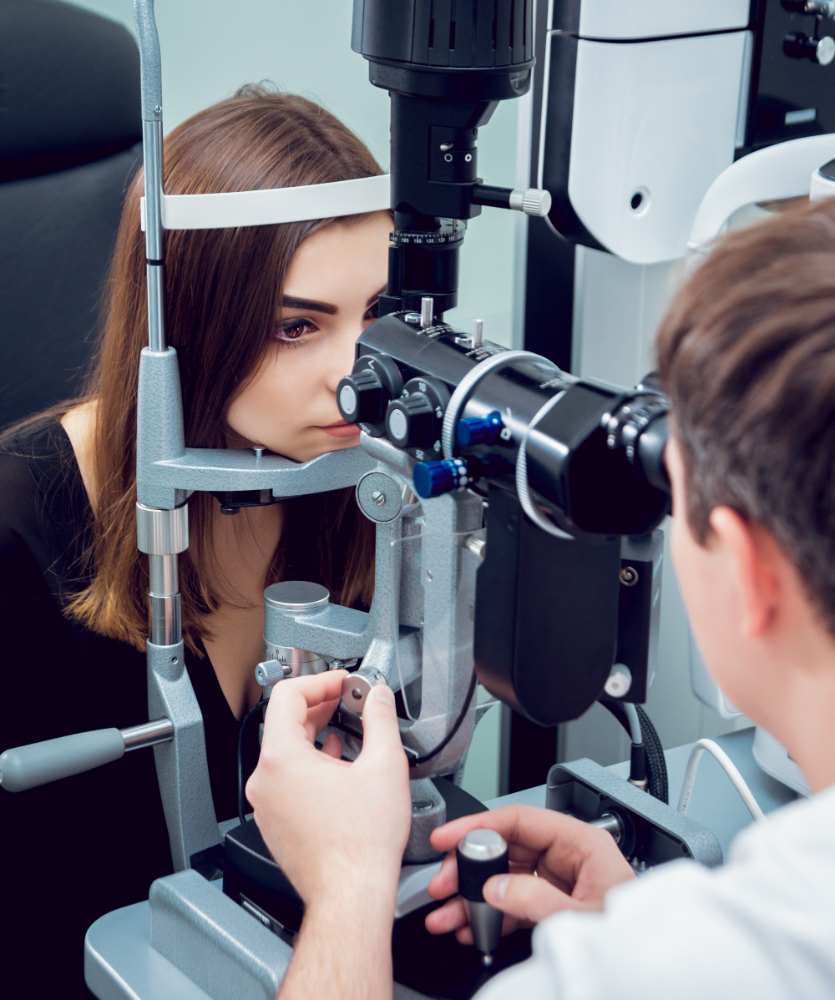
Refractive Lens Exchange (RLE), also known as Clear Lens Exchange (CLE) or Lens Replacement Surgery, is a surgical procedure performed to correct refractive errors and reduce or eliminate the need for glasses or contact lenses. Here’s an overview of the procedure:
Pre-operative Evaluation: Before undergoing RLE, you will undergo a comprehensive eye examination to assess your candidacy for the procedure. This evaluation includes measuring your refractive error (nearsightedness, farsightedness, or astigmatism), assessing your overall eye health, and determining the appropriate intraocular lens (IOL) power for your individual needs.
Anesthesia: RLE is typically performed under local anesthesia with sedation, although some patients may opt for general anesthesia. Your surgeon will discuss the anesthesia options with you and recommend the most suitable choice based on your preferences and medical history.
Surgical Technique: During the procedure, which is similar to cataract surgery, the natural lens of the eye is removed and replaced with an artificial intraocular lens (IOL). The surgeon makes a small incision in the cornea or sclera (the white part of the eye) and inserts a tiny probe to break up the lens using ultrasound energy (phacoemulsification). The fragmented lens is then removed through the same incision, and the IOL is implanted in its place.
IOL Selection: There are several types of IOLs available for RLE, including monofocal, multifocal, and accommodating lenses. Monofocal lenses provide clear vision at a single focal distance (usually distance vision), while multifocal and accommodating lenses can correct vision at multiple distances (near, intermediate, and distance). Your surgeon will help you choose the most appropriate IOL based on your visual needs and lifestyle preferences.
Closure and Recovery: Once the IOL is implanted, the incision is usually self-sealing and does not require sutures. You will be monitored in the recovery area for a short period before being discharged home on the same day as the procedure. Most patients experience improved vision immediately after RLE, although some may experience temporary blurriness or discomfort during the initial recovery period.
Post-operative Care: After RLE, you will need to follow your surgeon’s instructions for post-operative care, which may include using prescription eye drops to prevent infection and inflammation, wearing a protective eye shield at night, and avoiding strenuous activities and eye rubbing. You will also need to attend follow-up appointments to monitor your healing progress and evaluate your visual outcomes.
RLE is a safe and effective option for correcting refractive errors in patients who are not candidates for laser vision correction (LASIK or PRK) due to age-related changes in the crystalline lens or other factors. It can provide long-lasting vision correction and reduce or eliminate the need for glasses or contact lenses, improving overall quality of life for many patients. However, as with any surgical procedure, there are risks and potential complications associated with RLE, which should be discussed with your surgeon before undergoing treatment

